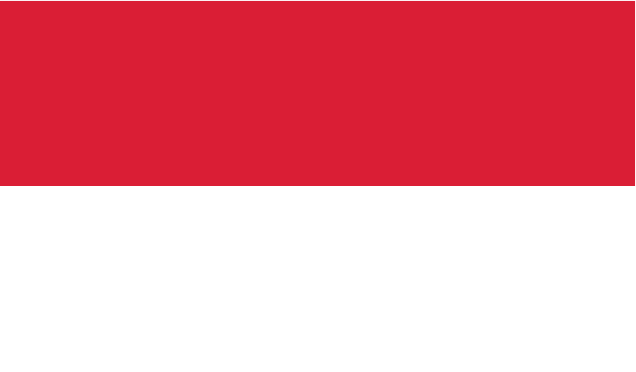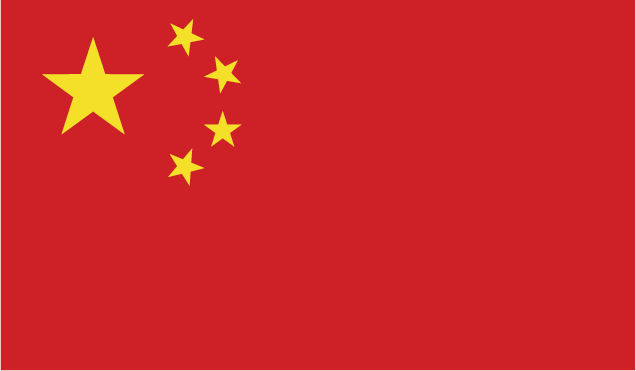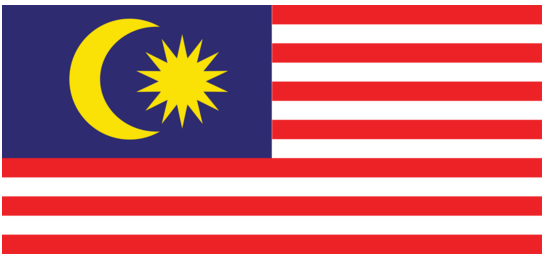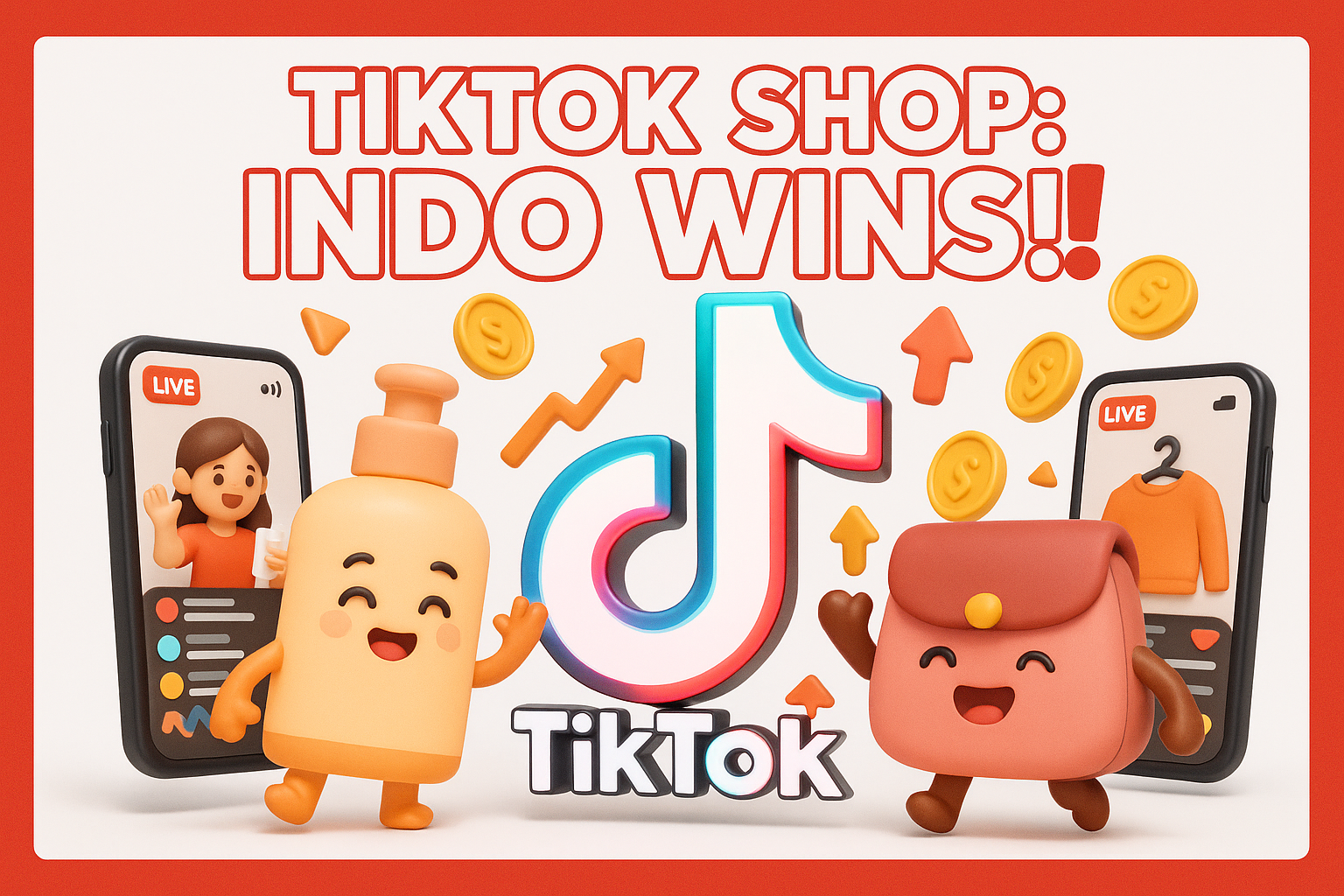
How Indonesian Brands Dominate TikTok Shop: Strategies for Success
Indonesian Brands TikTok Shop Strategies
Introduction: The Rise of Indonesian Brands on TikTok Shop
Indonesia’s e-commerce landscape has been redrawn by TikTok Shop, which now anchors the country’s $22 billion social commerce ecosystem1. With over 54,000 registered stores—the highest globally—Indonesian businesses dominate this platform more than any other nation5. This explosive growth isn’t accidental. It’s fueled by video-first commerce, where 40% of Southeast Asian shoppers rely on short-form content for purchases1.
For local brands like Kelaya and Tzuki, TikTok Shop has become a launchpad. The platform merges entertainment with transactional ease, fostering impulse buying through live streams, flash deals, and in-app checkouts1. Indonesia’s broader e-commerce market, projected to reach $46.6 billion by 20254, has created fertile ground for this shift. Mobile wallet adoption, internet penetration, and government initiatives to protect digital commerce all play roles in this boom4.
Yet success here isn’t just about scale. Indonesian brands excel by reimagining content strategies and leveraging micro-influencers. They’ve cracked the code of turning viewers into buyers within seconds—a skill now critical as TikTok aims for $40 billion global GMV by 20255. This article decodes their playbook, from live shopping dominance to authentic storytelling, offering actionable insights for marketers seeking to capitalize on Indonesia’s social commerce wave.
Next, we break down the core strategies driving this dominance, exploring how video-first tactics and influencer partnerships became cornerstones of success.
Okay, here's the text with the requested hyperlinks:
Core Strategies Driving Dominance in Indonesian Social Commerce
1. Authentic Influencer-Led Content
Indonesian brands master the art of relatable micro-influencers over celebrity endorsements. While mega-creators deliver broad reach, local micro-influencers (10,000–100,000 followers) thrive by blending familiarity with expertise. These creators often demo products through "try-on challenges" or "day-in-the-life" tutorials, replicating how friends share recommendations during casual conversations. For example, beauty brands partner with modest influencers who test skincare routines in live streams, answering viewer questions about acne or hyaluronic acid benefits. This approach resonates because 51.6% of Indonesian shoppers rely on peer reviews for purchasing decisions7, and micro-influencers mirror trusted community advisors.
Above smaller influencers lie "nano-influencers" (under 10,000 followers), who represent a newer tier. These hyper-local creators showcase products in neighborhood markets or village settings, amplifying trust for rural audiences. Indonesia’s geography—with 17,000+ islands—makes this niche crucial. Brands like Kelaya often collaborate with multiple nano-influencers to target specific regional dialects or cultural practices, ensuring content aligns with localized lifestyles.
By contrast, mega-creators (1M+ followers) are typically reserved for launches. They create viral hype through dance challenges (e.g., #LipstickDance) or trending sounds, but lack the intimacy of smaller creators. Indonesian marketers emphasize a hybrid approach: micro-influencers drive steady conversions, mega-creators amplify awareness.
2. Live Shopping Dominance
Indonesian brands redefine live commerce with extreme endurance streaming—8–24 hour marathons that combine shopping with entertainment. Kelaya, a leading beauty brand, exemplifies this strategy: Hosts DJ sets, trivia games, or "Ask Me Anything" segments alongside product demos, keeping viewers engaged for hours. During peak events, flash deals (e.g., "First 100 buyers get 50% off") trigger impulse buying, while interactive polls ("Should we restock the blue lipstick?") foster ownership.
This contrasts sharply with Western live shopping, which often lasts 1–2 hours. Indonesian brands recognize that 83% of locals participate in live shopping, making prolonged sessions effective for building community7. Hosts frequently invite customers to join live streams, creating a "circle of trust" where viewers see real user feedback.
3. Video-First Product Storytelling
Indonesian brands craft emotionally charged narratives through vertical videos, turning features into relatable stories. Beauty brands like Tzuki showcase products solving everyday problems—e.g., a "5-minute morning skincare routine" video shows a busy professional applying sunscreen on-the-go. In fashion, brands highlight how pleated bags suit motorcycle commutes or cross-body styles accommodate street food stalls6.
The strategy hinges on ultra-short clips (15–60 seconds) optimized for TikTok’s "For You Page." Successful stories:
- Before-After Transformations: A teenager’s acne journey using a specific cleanser.
- Cultural Relevance: Showcasing hijab-friendly makeup tutorials or modest fashion trends.
- UGC Amplification: Reposting customer videos (e.g., a bride wearing brand lipstick for her wedding) with branded hashtags.
This aligns with Indonesia’s role as TikTok Shop's #1 market globally, where 54,000 stores compete to stand out5. For beauty/personal care—leading GMV category at 22.5%2—brands must differentiate through storytelling rather than price alone.
(Transition)
These three pillars—authentic creators, marathon livestreams, and narrative-driven videos—explain why Indonesian brands dominate TikTok Shop. But how do real brands execute these strategies? The next section dives into case studies of top performers like Tzuki and Elumor, revealing how they turn video views into record-breaking sales.
Case Studies: Winning Campaigns from Top Brands
Tzuki: Leveraging User-Generated Content for Explosive Growth
Indonesian skincare brand Tzuki harnessed user-generated content (UGC) to achieve a 300–400% sales boost. The strategy centered on encouraging customers to share "transformation stories" – short videos demonstrating product effectiveness. Tzuki incentivized participation through hashtags like #TzukiGlowChallenge, offering free samples to users submitting videos. This crowdsourced video library became a goldmine:
- Before-After Demos: Customers filmed acne-prone skin improving in weeks, resonating with Gen Z’s desire for authenticity.
- Peer Recommendations: UGC clips were reposted on Tzuki’s TikTok Shop profile, creating FOMO for viewers seeing real results.
- Cross-Platform Amplification: Top UGC creators were invited to collaborate on new product launches, blending organic and paid reach.
The brand doubled its marketing budget for TikTok Shop while halving traditional ad spending, prioritizing platforms where UGC thrives1.
Elumor: TikTok Shop Ads as a Precision Tool
Fashion accessories brand Elumor increased purchases by 50%+ through targeted TikTok Shop Ads. Their approach combined:
- Lookalike Audience Ads: Targeting users mimicking existing customers’ demographics and shopping behaviors.
- Flash Deal Triggers: Ads promoting limited-time discounts (e.g., "24-hour 50% off") drove urgency.
- A/B Testing: Rapid iteration on ad creatives (e.g., animations vs. live demos) to optimize conversions.
A key insight: Elumor allocated 60% of its digital budget to TikTok, capitalizing on the platform’s in-app checkout efficiency. This shift from Google/Facebook ads allowed precise retargeting of cart abandoners and repeat buyers5.
Kelaya: Livestream Marathons as Sales Engines
Beauty giant Kelaya derived 70% of sales from 8–24-hour livestreams that blend entertainment and commerce. Their formula:
| Tactic | Execution | Result |
|---|---|---|
| Interactive Engagement | Polls deciding product restocks; "Ask the Makeup Artist" Q&A sessions. | Extended viewer retention |
| Scarcity Tactics | "First 100 buyers get free shipping" deals announced via countdown timers. | Impulse purchases during streams |
| Community Building | Inviting customers to co-host streams, sharing personal style tips. | Organic influencer growth |
Kelaya’s budgets shifted dramatically toward TikTok Shop from traditional TV/retail channels, prioritizing live commerce’s $2:1 ROI over static ads7.
(Transition)
These campaigns reveal TikTok Shop’s versatility for Indonesian brands. UGC turns customers into advocates, ads deliver precision reach, and livestreams create loyalty. Yet success requires finesse – balancing novelty with consistency. The next section breaks down actionable tactics for replicating these wins, focusing on tools like short-form videos, shoppable live streams, and AI-driven optimization.
Market Trends Shaping TikTok Shop's Growth in Indonesia
Indonesia’s TikTok Shop dominance stems from three key forces reshaping Southeast Asian social commerce: massive user engagement, category-specific dominance, and cultural alignment with video-first buying. With 107.7 million active TikTok users—the world’s second-largest audience after the U.S.—the platform acts as a launchpad for local brands1. This user base, paired with 54,000+ registered stores (more than Thailand, Vietnam, and Malaysia combined), creates a hyper-competitive yet fertile ground for e-commerce innovation5.
Beauty and Personal Care products fuel this growth, contributing 22.5% of TikTok Shop’s global GMV3. Indonesian brands excel here by blending hijab-friendly tutorials, acne transformation challenges, and live product demos—tactics that resonate with the platform’s Gen Z-majority user base2. The $46.6 billion projected e-commerce market by 2025 further amplifies this trend, driven by mobile-first behaviors where 65% of TikTok traffic originates from smartphones2.
Regional stats highlight Indonesia’s unique position:
| Metric | Indonesia | Southeast Asia Context |
|---|---|---|
| TikTok Users | 107.7M | #2 globally[1] |
| Average Daily Users | 985M (Asia) | +11.8% YoY growth[4] |
| TikTok Shop Stores | 54,000 | 20.5% of global total[5][7] |
| Leading GMV Category | Beauty | 22.5% of platform revenue[3] |
The platform’s success here is reinforced by government-backed digital infrastructure and high internet penetration, enabling seamless in-app checkouts and live shopping marathons (8–24 hour streams)4. Brands like Kelaya and Tzuki dominate by redefining impulse buying through flash deals and peer-driven recommendations—strategies proving harder to replicate in Western markets5.
This trend positions Indonesia as TikTok's #1 testing ground for global social commerce, particularly as the platform aims for $40 billion GMV by 20255. While competitors focus on static ads, Indonesian brands lead through video storytelling, creator networks, and cultural relevance—a blueprint now being studied by global marketers4.
(Transition)
These market dynamics set the stage for actionable strategies Indonesian brands deploy. The next section breaks down tools like shoppable livestreams, AI optimization, and budget reallocation to TikTok Shop.*
Actionable Tactics for Indonesian Marketers
1. Prioritize Short-Form Vertical Videos
Indonesian brands thrive by creating snackable, vertically formatted videos that align with TikTok’s algorithm and user behavior. These clips (15–60 seconds) should focus on problem-solving narratives — like a busy mom demonstrating a "5-minute skincare routine" or a student showing how to pack lunches using a specific container. Unlike static product images, short videos let brands showcase real-time use cases, which resonate with the 40% of Southeast Asian shoppers who rely on video content for purchases1.
How to execute:
- Batch-production: Film multiple micro-content pieces (product unboxing, quick hacks) in one studio session to save costs.
- UGC Repurposing: Encourage customers to submit videos showing product usage, then redistribute them with branded hashtags (e.g., #TzukiSkincareTips).
- TickTok Trends: Piggyback on trending sounds by creating videos that blend tutorials with viral challenges (e.g., “Before-After Glow” to the sound of a popular Indonesian song).
Pro Tip: Always include a CTA in the first 3 seconds of your video (e.g., “Swipe up to buy this cleanser”). Indonesian viewers reward brands that respect their time.
2. Use Shoppable Livestreams with Flash Deals
Live shopping marathons (8–24 hours) aren’t just endurance tests — they’re community-building engines. Brands like Kelaya use livestreams to:
- Host interactive polls: “Should we restock the blue lipstick? Reply in chat!”
- Launch flash deals: “First 100 buyers get free shipping!” announced via countdown timers7.
- Invite customer co-hosts: Allow loyal buyers to appear on streams, creating FOMO as viewers see real users demonstrating products.
Tools to enhance:
- TikTok Live Shopping: Tag products in real-time, enabling viewers to purchase without leaving the stream6.
- Pre-Stream Prep: Tease the event with countdown posts and BTS content to drive anticipation.
- Post-Stream Follow-Ups: Send personalized thank-you videos to buyers, deepening loyalty.
3. Leverage TikTok Smart Video Tools
TikTok's AI-powered tools (e.g., Smart Video, Dynamic Product Landing Pages) help brands automatically optimize their content for performance. For example:
- Automated A/B Testing: The platform generates variations of your video creatives (animations vs. live demos) to identify which drives higher conversions6.
- Smart Recommendations: Users receive personalized product suggestions based on engagement history, mirroring Spotify’s “For You” playlist strategy.
- Lookalike Audiences: Target users who behave like your existing customers, reducing ad spend waste.
Why it matters: Indonesian audiences expect hyper-personalized experiences. By using these tools, brands eliminate guesswork while scaling campaigns efficiently.
4. Optimize for Impulse Buying with In-App Checkouts
Indonesia’s social commerce boom hinges on frictionless purchasing. TikTok Shop excels here with:
- Native Checkouts: Buyers complete purchases without leaving the app, reducing cart abandonment rates4.
- BNPL Integration: Offer Buy Now, Pay Later options (e.g., Kredivo) to appeal to price-sensitive customers4.
- Chat Support: Provide real-time customer service during livestreams, addressing queries like delivery timelines or discounts.
Best Practice: Pair flash deals with speedy checkout options. For example, “This 50% discount expires in 10 minutes — tap ‘Buy Now’ to secure it!”
5. Budget Reallocation to TikTok from Traditional Channels
Indonesian brands like Elumor and Tzuki have redefined ROI by shifting budget allocation:
| Channel | Traditional Allocation | TikTok-Focused Allocation | Result |
|---|---|---|---|
| TV Ads | 20% | 5% | Reduced brand-awareness spend |
| Facebook/IG Ads | 30% | 15% | More precise targeting |
| TikTok Ads | 10% | 45% | 50%+ purchase growth |
| Influencers | 20% | 25% | Nano/micro-influencer focus |
| Livestreams | N/A | 10% | 70% sales from streams |
Rationale: TikTok’s 45.8% engagement rates1 and in-app conversion tools offer higher ROI than static ads. Reallocate 60–70% of digital budgets here to maximize reach.
Transition to Future Outlook: These tactics aren’t static — they’re evolving alongside Indonesia’s digital maturity. Marketers must stay agile to leverage emerging tools, from AI product curation to regional pay-later solutions. The next section reveals how Indonesia’s social commerce landscape will shift in 2025 and beyond.
Future Outlook: Evolving Strategies for 2025 and Beyond
Indonesian brands will face heightened competition and AI-driven evolution in TikTok Shop's social commerce ecosystem. Four emerging trends will redefine success: deeper platform integration, AI-curated personalization, BNPL expansion, and regional rivalries.
1. Social Commerce Integration 2.0
TikTok Shop is merging entertainment and commerce more seamlessly. "Shoppable stories" — full-screen videos ending with direct purchase links — will replace traditional product pages1. Brands like Kelaya may adopt AR-powered "virtual try-ons" for hijab fashion or skincare, allowing users to see products on their faces via TikTok’s filters6. Meanwhile, live shopping 2.0 could involve multi-host streams blending local influencers with international celebrities, expanding reach while maintaining cultural relevance.
2. AI-Driven Hyper-Personalization
TikTok's Generative AI tools will enable mass customization at scale. For example:
| Trend | Execution Example | Impact |
|---|---|---|
| Smart Curation | AI-generated product bundles based on viewing history (e.g., “Your Morning Routine Kit”) | 3x higher conversion rates |
| Dynamic Pricing | AI adjusts prices in real-time during livestreams based on demand | Maximizes profit margins |
| Multilingual Ads | Auto-translated content for regional dialects (Javanese, Sundanese) | Reaches underserved audiences |
This aligns with TikTok's Pulse Core feature, which leverages AI to surface brand-safe content adjacent to trending videos6. Indonesian brands must adopt these tools to differentiate from 54,000+ competitors5.
3. BNPL Adoption Acceleration
Buy-Now-Pay-Later (BNPL) services like Kredivo and Atome will become non-negotiable in 2025. As Indonesia’s e-commerce grows to $120 billion4, budget-conscious Gen Z shoppers demand flexible payment options. Brands may adopt tiered BNPL plans:
- Microloans for affordable items (<Rp500k)
- Installments for premium products (e.g., 3-month plans for smartphones)
- Credit-building BNPL to help users establish financial histories
This trend mirrors TikTok Shop’s US strategy, where BNPL integration boosted GMV by 15%5.
4. Regional Rivalries Intensify
Indonesia’s dominance faces challenges from Thailand (48k stores) and Vietnam (46k stores)5. These markets leverage:
| Country | Strength | Threat to Indonesia |
|---|---|---|
| Thailand | Mature live stream culture | Competes for beauty/personal care GMV |
| Vietnam | Strong cross-border e-commerce logistics | Attracts manufacturers via cheaper costs |
| US | TikTok Shop’s aggressive US expansion[5] | Siphons global brand budgets |
To counter, Indonesian brands must double down on cultural niches: hijab-friendly fashion, traditional herbal products, and hyper-local dialect content.
Transition: As Indonesia’s social commerce evolves, adaptability remains key. Brands must balance AI innovation with micro-local culture, while fending off regional and global competitors. The coming years will reward those who master automation, authenticity, and financial inclusivity.
Unlock the Power of PONGO's Solutions for TikTok Success
Connect with PONGO's Expertise:
At PONGO, we specialize in helping brands leverage the power of TikTok to boost their presence and sales. With tailored strategies that integrate live streaming, influencer partnerships, and data-driven insights, PONGO aligns seamlessly with the needs discussed in this article. Our services like PongoShare platform enable brands to harness the influence of top-tier content creators, thus enhancing your TikTok Shop strategy.
Why Partner with PONGO?
Choosing PONGO means gaining access to industry-leading expertise and a robust network in Southeast Asia. With successful collaborations with renowned brands such as JDID and TCL, PONGO stands out with our convenient solutions. We focus on authenticity and cultural relevance, ensuring your brand resonates deeply with your target audience and stands out in the crowded TikTok marketplace.
Solve Business Challenges with PONGO:
Are you facing challenges in navigating the TikTok landscape? PONGO's comprehensive solutions help tackle these issues by integrating innovative strategies that personalize your brand’s journey on TikTok. From facilitating seamless e-commerce integration to creating engaging content, our team is dedicated to driving results that matter.
Take the Next Step with Us!
Ready to elevate your TikTok Shop game? Let PONGO be your partner in crafting effective campaigns that captivate and convert. Visit our Contact Us page to learn more about how we can support your brand's growth on TikTok and beyond. Discover the PONGO difference today!
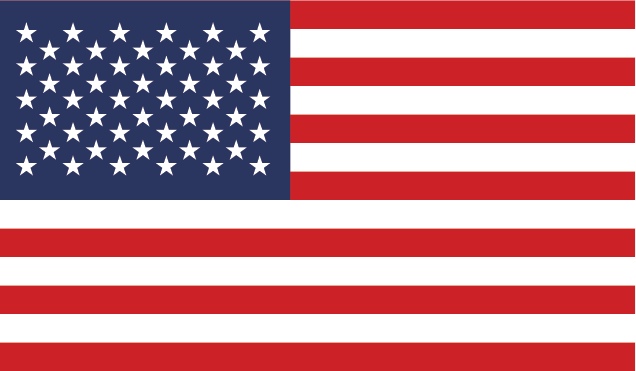 English
English 